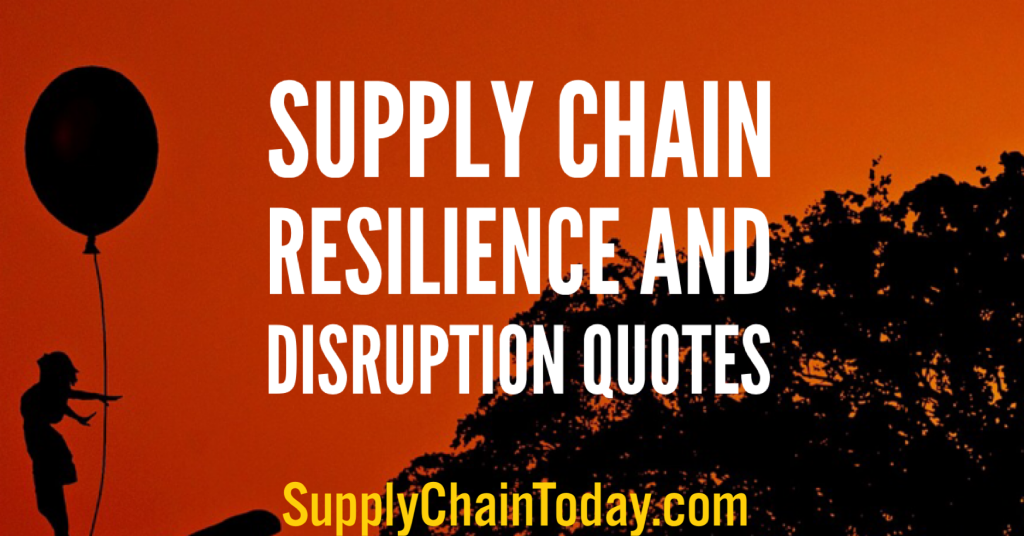Bullwhip Effect: How Sudden Demand Increases Affect Supply Chains.
This video will demonstrate how sudden demand impacts supply chains. Panic buying due to the coronavirus has caused major ripples in the retail supply chain that go all the way back to the raw material supplier.
The bullwhip effect is a supply chain phenomenon that describes how small fluctuations in demand at the retail level can cause progressively larger fluctuations in demand at the wholesale, distributor, and manufacturer levels. The effect is named after the movement of a bullwhip, where a small movement of the wrist becomes a much larger, uncontrolled movement at the end of the whip.
Caused by a Variety of Factors, including:
- Forecasting errors: When retailers make inaccurate forecasts of demand, it can lead to overstocking or understocking. This can then lead to wholesalers, distributors, and manufacturers making inaccurate forecasts of demand, and so on.
- Lead times: Lead times are the amount of time it takes for a product to move through the supply chain. Long lead times can amplify the bullwhip effect, as retailers may place larger orders to ensure that they have enough inventory to meet demand.
- Quantity discounts: Quantity discounts encourage retailers to place large orders, which can amplify the bullwhip effect.
- Promotions: Promotions can lead to sudden spikes in demand, which can be difficult for the supply chain to keep up with.
Negative Consequences of the Bullwhip Effect
- Increased inventory costs: The bullwhip effect can lead to overstocking, which can increase inventory costs.
- Stockouts: The bullwhip effect can also lead to stockouts, which can lost sales and damage customer satisfaction.
- Inefficient production: The bullwhip effect can make it difficult for manufacturers to plan production efficiently, which can lead to higher costs and lower quality products.
Ways to Mitigate the Bullwhip Effect
- Improve forecasting: Businesses can improve forecasting by using more sophisticated forecasting methods and by collecting more accurate data on demand.
- Reduce lead times: Businesses can reduce lead times by streamlining their supply chains and by investing in faster transportation and logistics methods.
- Eliminate quantity discounts: Businesses can eliminate quantity discounts to discourage retailers from placing large orders.
- Coordinate promotions: Businesses can coordinate promotions with their suppliers to help them to plan production more effectively.
The bullwhip effect is a complex phenomenon, but it is one that businesses need to be aware of in order to avoid supply chain disruptions and improve their bottom line.
The MBA Beer Came and Bullwhip Effect are Closely Related.
The MBA Beer game is a simulation game that is used to teach supply chain management principles and concepts. It was developed by MIT professors in the 1960s as a way to demonstrate the complexities and challenges of managing a supply chain, and it has since become a popular tool in business education.
The game is based on the beer industry and involves players representing different parts of the supply chain, including retailers, wholesalers, distributors, and manufacturers. The goal of the game is to manage the flow of beer through the supply chain in response to changing customer demand, while minimizing costs and maximizing profits.
During the game, players must make decisions about ordering, production, and inventory management, and they must communicate and collaborate with other players in order to meet the needs of customers. The game highlights the importance of coordination and communication in supply chain management, and it illustrates the challenges and trade-offs that companies face when managing a supply chain.
The MBA Beer game is often used in business schools as a way to teach students about supply chain management, and it has also been used in a variety of other settings, including corporate training and research.
Supply Chain Quotes
“There are two ways to extend a business. Take inventory of what you’re good at and extend out from your skills. Or determine what your customers need and work backward, even if it requires learning new skills. Kindle is an example of working backward.” ~Jeff Bezos
“Make inventory a common enemy for your company.” ~Dave Waters
“The goal is not to improve one measurement in isolation. The goal is to reduce operational expenses AND reduce inventories and increase throughput simultaneously.” ~Eliyahu M. Goldratt
“There is no governing structure for a pandemic, and little more than vague political pressure to ensure limited access to life-sparing tools and medicines for more than half the world population.” ~Laurie Garrett
I asked one retailer, I said, “Let me ask you, are you going to raise prices next year?” They looked at me and said, “Not only are we not going to raise prices, we’re going to have to lower prices, increase the quality of the goods, and turn the inventory quicker.” ~Ken Moelis
“The coronavirus will make Amazon, Walmart and Costco much stronger than what they were previously.” ~Dave Waters.
Bullwhip Effect and SCM Disruption
- Apple’s Supply Chain – Coronavirus.
- Supply Chain Disruption.
- Crisis: 500,000 Containers Stuck At US Ports.
- How Companies Are Overhauling Supply Chain to Ease Bottlenecks.
- How Serious is the Coronavirus?
- SCM Technology Trends.
- SCM: The Beer Game. 45 min video. 75K views
- Suez Canal Blocked: How the Ship was Freed.
- Supply Chain Master: Professor Hau Lee on the bullwhip effect.
- Supply Chain Risk Management Discussion.
- Teamwork Quotes.
- The Beer Game – Supply Chain Management.
- The coronavirus impact on Apple.
- Where Is Globalisation Headed? A Supply Chain View.


